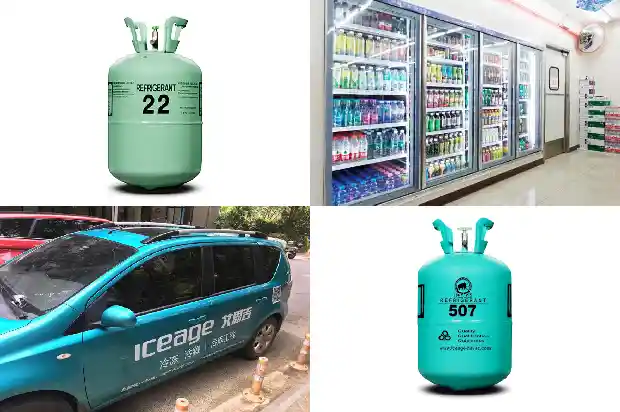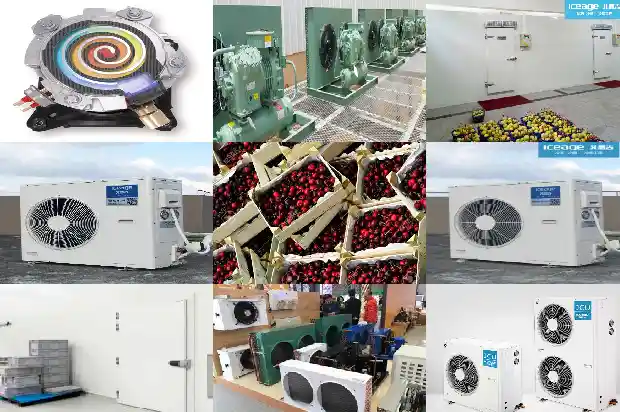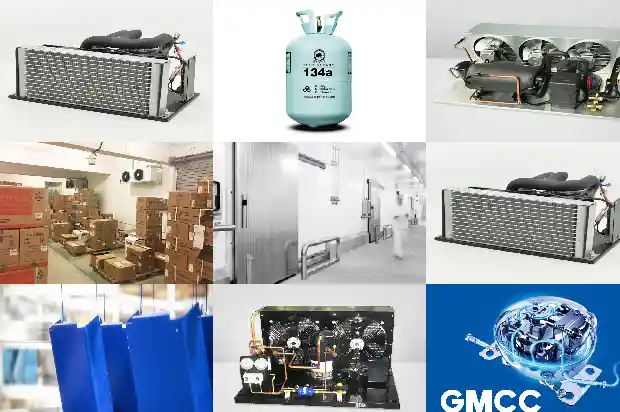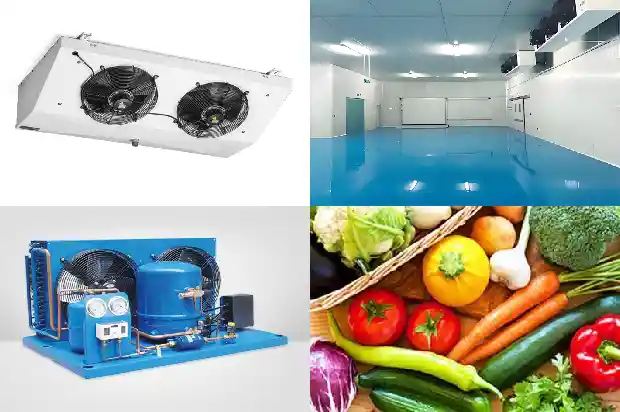Winter Approaches: How to Solve the Low High - pressure Issue of Air - cooled Condensing Units?
2025-02-20
In winter (when the ambient temperature is relatively low), the condensing pressure of the condenser is often very low.

1. Fault of Excessively Low Condensing Pressure
In a refrigeration system, if the condenser is installed outdoors, the discharge pressure (condensing pressure) of the system is often relatively low in winter (or in a low - temperature environment). This is more common in northern areas. This situation is not only applicable to air - conditioners but also to other equipment like cold storages.
An excessively low condensing pressure makes it impossible for the expansion valve to obtain a sufficient pressure drop across its two ends. As a result, it's difficult to supply an appropriate amount of refrigerant to the evaporator. On one hand, the refrigeration capacity of the system fails to meet the requirements. On the other hand, the system frequently experiences malfunctions such as low - pressure alarms.
2. Several Ways to Increase Condensing Pressure in Low - temperature Conditions
2.1 Using a Discharge Pressure Controller
Intermittent fan operation is simple and practical, and the technology is well - established. The controller employed is a pressure controller, which can regulate the intermittent start - stop of the fan.
- 2.1.1 When the pressure is too low, shut off the fan.
- 2.1.2 When the pressure is too high, turn on the fan.
Generally, for small - capacity units, two or more fans are used. One fan operates continuously, while the rest are controlled by the pressure controller. The start or stop of these fans is determined by the level of the condensing pressure.
2.2 Controlling Fan Speed
[The original text seems to be about introducing speed - regulating equipment, perhaps something like "The figure above shows a speed governor and a three - phase frequency converter", but due to insufficient information, it's hard to provide an accurate translation.]
2.

The main component is a louver - type air volume control device. Its principle involves using a piston - type damper driven by high - pressure refrigerant. This control device can achieve a stable discharge pressure, just like a fan - speed controller.
The louver device can be installed either at the air inlet or the air outlet.

The louver device can be installed either at the air inlet or the air outlet.
Related Articles
- Why Can Air - Source Heat Pumps Be Damaged by Freezing? How to Prevent Freezing in Winter?
- How much cooling capacity does outdoor fresh air in winter have?
- Common Pressure Valves and Protection Devices in Refrigeration Units
- How to Troubleshoot and Repair High - pressure Protection of Air - cooled Units?
- How to Read the High - and Low - Pressure Gauges of Refrigeration Air - conditioners?
- Air - conditioner Low - pressure Alarm? These Nine Common Causes
- Why Does the Evaporation Temperature of the Refrigeration System Drop Too Low? And Why is the Condensing Pressure Too High?
- What are the Cooling and Heating Pressures of an Air Conditioner? How to Calculate the Optimal Refrigerant Quantity?
- Common Causes and Analysis of High and Low Pressure Alarms
- Obscure Knowledge of Static Pressure, Dynamic Pressure, Latent Heat and Sensible Heat in the HVAC Industry
- Multi-split air conditioner: Nitrogen charging for welding, pressure maintaining, vacuuming and refrigerant charging
- What Causes Noise in Pressure Reducing Valves?
- Pressure Gauge in Refrigeration Equipment
- Reasons and Solutions for High and Low Condensing Pressure in Air-cooled and Water-cooled Systems
- Principle of Multiple Storages in One Unit and Evaporation Pressure Regulation Methods
- Causes and Solutions for Elevated Pressure in Cold Storage
- Analysis and Treatment of Common Low-Pressure Faults in Chillers
- What are the effects of pressure and temperature on the refrigeration system of a cold storage?
